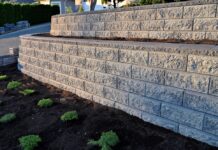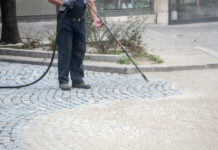Summer heat can be brutal—not just for people, but also for your hardscaping. While masonry materials like brick, concrete, and stone are known for their durability, prolonged exposure to high temperatures can take a toll. Understanding how heat affects your hardscape helps you protect your investment and maintain a safe, attractive outdoor space.
Thermal Expansion
When masonry heats up, it expands. Over time, repeated cycles of heating and cooling can cause cracking, especially in concrete surfaces. These small cracks may start as cosmetic issues but can eventually compromise structural integrity if not addressed.
Surface Fading and Discoloration
UV rays from the sun can fade the color of pavers, bricks, and decorative stone. This is particularly noticeable in darker or dyed materials. Sealing your masonry can help preserve its color and protect it from long-term sun damage.
Drying and Crumbling Mortar
Extreme heat can dry out the mortar joints between bricks or stones, making them brittle and prone to crumbling. This weakens the bond between masonry units and can lead to loose or shifting pieces over time.
Increased Maintenance Needs
High temperatures can also accelerate the breakdown of sealants and other protective coatings. This means you’ll need to reapply sealant more often to keep surfaces protected and looking fresh.
By recognizing how heat affects your hardscape, you can take proactive steps—like regular inspections, sealing, and timely repairs—to extend the life and beauty of your outdoor masonry features.



